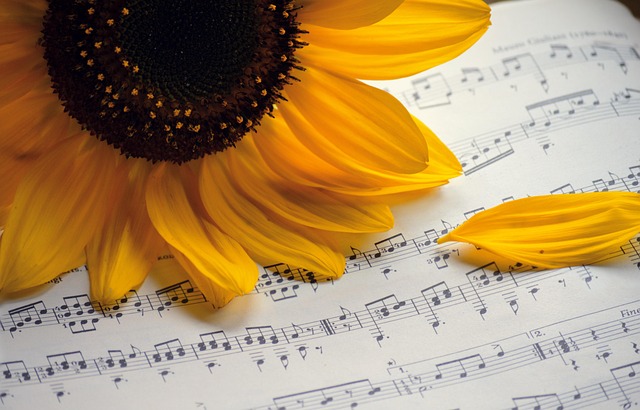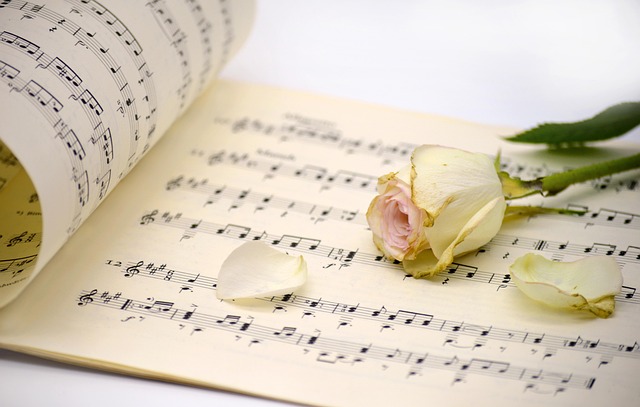Learning multiple musical instruments expands creative horizons, enhances cognitive skills, and opens doors to diverse genres, cultures, and career paths. It fosters personal growth, builds confidence, and encourages innovative compositions, ultimately enriching life through music's universal language and healing power, as seen in today's dynamic music scene.
“Unleash your inner musician and explore the multitude of benefits that learning multiple musical instruments brings. From enhancing your musical versatility and unlocking new creative outlets to improving cognitive abilities and fostering personal growth, it’s a journey that enriches both mind and soul. Dive into this comprehensive guide to discover how playing various instruments allows you to express yourself more broadly, connect with diverse cultures, and truly appreciate the art of music.”
- Enhanced Musical Versatility: Learning Multiple Instruments Unlocks New Possibilities
- Brain Benefits: Improved Cognitive Abilities and Creativity
- Wider Range of Expression: Communicating Emotions Through Diverse Sounds
- Cultural Connection: Exploring Traditional Music and Global Traditions
- Personal Growth: Building Discipline, Confidence, and a Deeper Appreciation for Music
Enhanced Musical Versatility: Learning Multiple Instruments Unlocks New Possibilities

Learning multiple musical instruments is like unlocking a treasure chest filled with endless creative possibilities. Each new instrument introduces its unique sound, scale, and playing technique, expanding your musical vocabulary significantly. This versatility allows musicians to explore diverse genres, from classical to jazz, blues, and beyond, seamlessly transitioning between styles.
For instance, a guitarist who also learns the piano gains access to a broader range of music theory and composition techniques. They can create complex harmonies, improvise solos in jazz or blues styles, and even delve into sound engineering basics for recording their own tracks. Analyzing lyrics and their meaning becomes more engaging as they understand how different instruments contribute to the overall song structure and atmosphere. By mastering multiple instruments, musicians find themselves equipped to navigate various musical landscapes, making them well-rounded artists who can adapt and innovate in any musical context.
Brain Benefits: Improved Cognitive Abilities and Creativity

Learning to play multiple musical instruments offers a plethora of cognitive benefits, enhancing brain function and fostering creativity. Interactive music learning platforms provide a dynamic way to engage with songs, where adolescents can explore different styles, from classical to jazz and blues improvisations. This interactive approach not only improves memory and concentration but also encourages lateral thinking and problem-solving skills.
In the world of music education, playing multiple instruments allows young minds to understand the intricate relationships between sound, rhythm, and melody. This multi-faceted learning experience stimulates various parts of the brain, promoting better cognitive abilities and creativity. As adolescents delve into these musical journeys, they discover that each instrument offers a unique perspective, shaping their artistic expression and opening doors to diverse music industry career paths.
Wider Range of Expression: Communicating Emotions Through Diverse Sounds

Learning multiple musical instruments opens up a world where musicians can express themselves in diverse and unique ways. Each instrument has its own voice, characterized by distinct sounds and tones that contribute to a richer, more nuanced music scene. By mastering various tools, artists gain a broader palette of emotions to convey through their melodies, harmonies, and rhythms. This versatility allows them to communicate feelings in a way that resonates deeply with listeners, transcending language barriers and cultural differences.
In today’s diverse musical landscape, influenced by pop culture’s ever-shifting trends and reflected in the music history timeline for beginners, musicians often draw inspiration from different genres. This eclecticism is evident when artists incorporate elements of jazz, rock, classical, and electronic sounds into their compositions. By embracing this cultural significance and giving us a call at [dancing to different genres: cultural significance], musicians can create songs that speak to a wide audience, fostering unity and appreciation for the ever-evolving musical tapestry.
Cultural Connection: Exploring Traditional Music and Global Traditions

Learning multiple musical instruments offers a unique window into different cultures and their rich musical traditions. By picking up various instruments, musicians can explore a vast array of global sounds, from the enchanting melodies of traditional Chinese zither to the rhythmic beats of African drums. This cultural connection deepens when one delves into the music history timeline for beginners, uncovering the evolution of songs across time and place.
Understanding musical forms, whether classical or modern, becomes more nuanced when instruments are played beyond their conventional roles. The exploration of different genres allows musicians to appreciate the aesthetics in various musical performances, from the structured elegance of classical compositions to the spontaneous energy of jazz improvisations. This diverse exposure not only broadens one’s artistic perspective but also fosters a deeper respect for the global tapestry that music weaves.
Personal Growth: Building Discipline, Confidence, and a Deeper Appreciation for Music

Learning multiple musical instruments is an incredible journey that fosters personal growth and enhances various aspects of life. As individuals explore different sounds and rhythms, they develop a stronger sense of discipline. Mastering each instrument requires consistent practice and patience, teaching valuable lessons about commitment and perseverance. This disciplined approach often spills over into other areas, helping one set and achieve goals in their academic or professional pursuits.
Moreover, playing music builds confidence as learners master the art of translating ideas into melodies. The ability to read musical notation and understand different types of instruments broadens cognitive skills. It encourages creativity, enabling individuals to experiment with unconventional instruments and their unique sounds, leading to innovative compositions. This deeper appreciation for music and its various forms not only enriches personal life but also opens doors to new artistic expression through music therapy, as highlighted by our brand, where we find ourselves immersed in the healing power of sound.
Learning multiple musical instruments offers a myriad of benefits that extend far beyond just playing songs. It enhances cognitive abilities, boosts creativity, and opens doors to diverse expressions of emotion. By exploring traditional music from around the globe, individuals cultivate a deeper connection to cultural heritage. Moreover, this practice fosters personal growth, instilling discipline, confidence, and a profound appreciation for the art form. Embracing musical versatility allows one to navigate various genres and styles, enriching their musical journey at every turn.








Leave a Reply